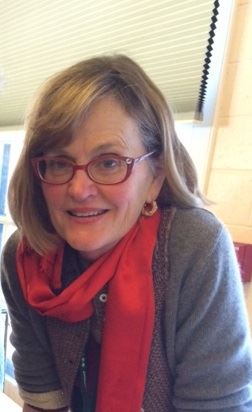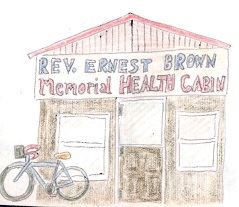...and I hope, by thy good pleasure, safely to arrive at home. The Methodist Hymnal, #93

Once upon a time, beginning in 1830, a missionary roamed the vast, lonesome and wild terrain of Michigan’s Upper Peninsula, ministering to the Indians of the Great Lakes. Bishop Frederic Baraga, known as the Snowshoe Priest, traveled by foot over 500 miles every winter through blinding snowstorms and deep forests, over trackless mountains to the remote villages of five tribes.
Baraga, known as the Snowshoe Priest, traveled by foot over 500 miles every winter through blinding snowstorms and deep forests, over trackless mountains to the remote villages of five tribes.
A modern-day traveler can discover more about Bishop Baraga’s life by visiting the Shrine of the Snowshoe Priest on Keweenaw Bay, featuring a 60-foot bronze statue atop 26-foot-long snowshoes. This curiosity is surrounded by five teepees, a table with votive candles, and a Cornish-Pasty stand. Tourists not awestruck by the Bishop’s treacherous calling to bring thousands to Christ in howling, arctic conditions probably liken this quirky, hidden shrine to others in its category, such as the famous Corn Palace in South Dakota, constructed entirely of corn husks, or the world’s largest concrete peanut sculpture in Oklahoma.
One-hundred-fifty years later, a young lad was growing up not far from Keweenaw Bay in the Upper Peninsula. There Tommy Brown became a mediocre skier - even breaking his leg one season - on the nearby Porcupine Mountains. He played hooky with his classmates at the majestic Bond Waterfalls, only a bicycle ride away. His spiritual life began at the tiny Ewen Methodist Chapel, with only four pews on each side, and an organ, powered by a frayed extension cord, that he sometimes played. His faith grew in the summers at Camp Michigamme, a church camp where campers  plunged into the glittering lakes, hiked through meandering forests and leaped over swift white rivers, and, when feeling puny - or faking it - would rest at the Ernest T. Brown Memorial Health Cabin, named after Tommy’s great-grandfather.
plunged into the glittering lakes, hiked through meandering forests and leaped over swift white rivers, and, when feeling puny - or faking it - would rest at the Ernest T. Brown Memorial Health Cabin, named after Tommy’s great-grandfather.
It may be only a piece of a state, but it has a feel of a lost continent. If there’s a grander landscape on the planet, another intrepid new bishop just might begin discovering it soon in another state miles away.
Tommy Brown, who grew into Thomas James Brown, Bishop-elect of the Diocese of Maine, might feel like he’s going home. Replacing snowshoes with snow tires and maybe a navigational gadget a bit more advanced than a compass, Thomas will be visiting congregations spread across 33,265 square miles. Thank goodness Bishop Baraga never snowshoed through Maine’s tangled, desolate 100-Mile Wilderness; he would have succumbed to exposure and starvation just trying to get out, a fate which has befallen even hikers of today. Near this unforgiving wilderness is Church of the Advent, the northernmost outpost of the diocese in Caribou, nearly in Canada.
As he makes his way to All-Saints-by-the-Sea summer chapel on Bailey Island, probably with just four pews, the rugged seashore might remind Thomas of miles of crashing waves on the shores of his boyhood: Lakes Superior, Huron, and Michigan. He’ll climb to St. Peter’s Church in the eastern White Mountains, and gaze northward towards abandoned paper mills, reminiscent of abandoned copper mines of his youth.
Thomas’s well-worn Book of Common Prayer will be next to him as he navigates those miles of two-lane winding, country roads. With the defroster full on and the windshield wipers frantically keeping the ice from forming an impenetrable crust, his flocks, from California to Vermont to Massachusetts are praying with him the beautiful Prayer for Travelers:
miles of two-lane winding, country roads. With the defroster full on and the windshield wipers frantically keeping the ice from forming an impenetrable crust, his flocks, from California to Vermont to Massachusetts are praying with him the beautiful Prayer for Travelers:
Preserve those who travel;
Surround them with your loving care;
Protect them from every danger;
And bring them in safety to their journey’s end;
Amen.
Godspeed, Thomas, and welcome home.

Ellen Wilson, former warden and cross-country cyclist,
including 533 miles in Michigan’s Upper Peninsula




